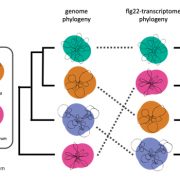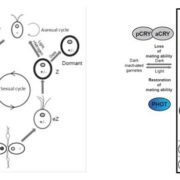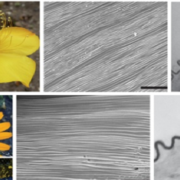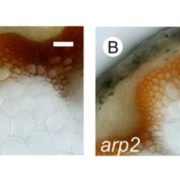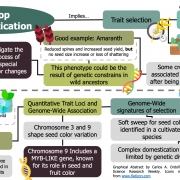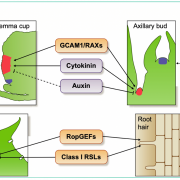Dysregulation of expression correlates with rare-allele burden and fitness loss in maize ($) (Nature)
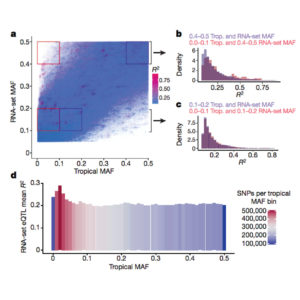 Deleterious mutations often underlie disease susceptibility and reduced fitness, but are very difficult to study due to their low frequency in the population. Maize is a great system for studying deleterious mutations because of high genetic diversity and the rapid decay in genetic linkage, enabling high resolution mapping of rare and common alleles. Kremling and colleagues studied the transcriptome of seven different tissues across 255 maize varieties, identifying a relationship between the abundance of rare alleles in the upstream gene coding region and extreme gene expression. The rare variants closest to the transcription start site had the largest effect on gene expression. The rare alleles of tropical maize population explained more variation in expression than common alleles. Interestingly, those rare alleles a have higher frequency in temperate maize varieties. This suggests that the tropical-to-temperate bottleneck is responsible for substantial changes in gene expression. Using previously collected data on plant fitness, the team identified that rare allele burden correlated with decreased fitness, yet the effect is still to be confirmed using bi-parental populations. This study provides first link between deleterious mutations affecting gene expression, altered allele frequencies caused by population bottlenecks, and fitness consequences. (Summary by Magdalena Julkowska) Nature 10.1038/nature25966
Deleterious mutations often underlie disease susceptibility and reduced fitness, but are very difficult to study due to their low frequency in the population. Maize is a great system for studying deleterious mutations because of high genetic diversity and the rapid decay in genetic linkage, enabling high resolution mapping of rare and common alleles. Kremling and colleagues studied the transcriptome of seven different tissues across 255 maize varieties, identifying a relationship between the abundance of rare alleles in the upstream gene coding region and extreme gene expression. The rare variants closest to the transcription start site had the largest effect on gene expression. The rare alleles of tropical maize population explained more variation in expression than common alleles. Interestingly, those rare alleles a have higher frequency in temperate maize varieties. This suggests that the tropical-to-temperate bottleneck is responsible for substantial changes in gene expression. Using previously collected data on plant fitness, the team identified that rare allele burden correlated with decreased fitness, yet the effect is still to be confirmed using bi-parental populations. This study provides first link between deleterious mutations affecting gene expression, altered allele frequencies caused by population bottlenecks, and fitness consequences. (Summary by Magdalena Julkowska) Nature 10.1038/nature25966


